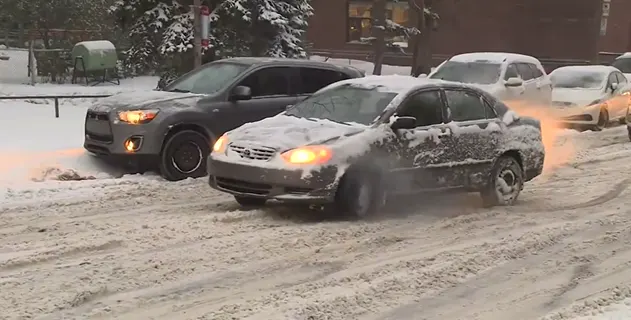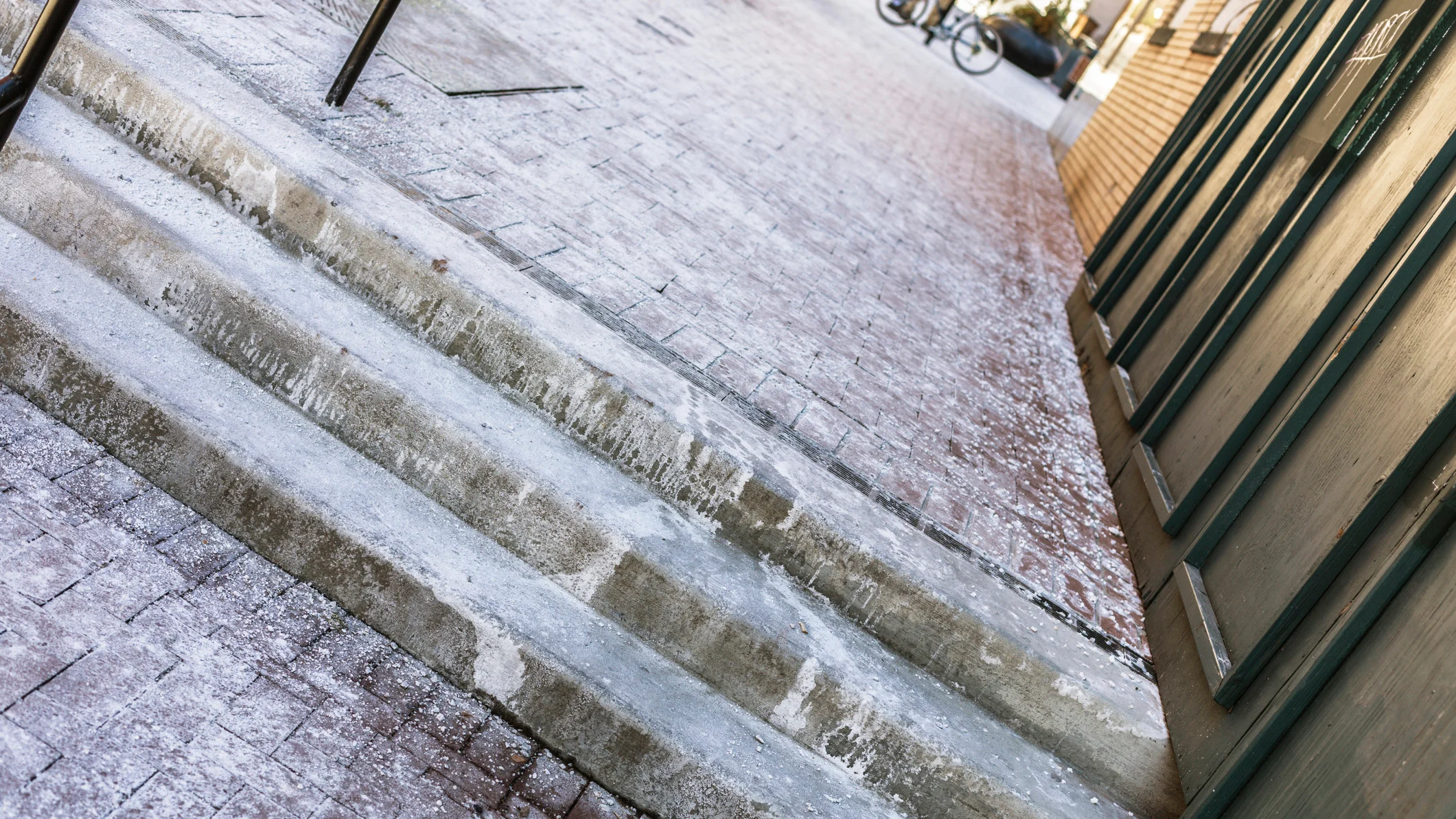
How to protect your pets from the dangers of 'contact voltage'
A combination of aging city infrastructure and wet weather is posing a danger to dogs and dog-walkers alike
Walking your dog along city streets in the the colder months of the year often means dealing with messy conditions that can make an otherwise enjoyable bit of exercise unpleasant. In some rare cases, though, it can actually be dangerous.
Toronto resident Brooke Filsinger was walking her dalmation, Hershey, on the Ryerson campus during snowy weather last winter, when the dog suddenly cried out and tried to take off running at full speed.
It was "like no sound she's made before", Filsinger said.
"The first time it happened, I thought she had just been spooked by something," she explained. "When it happened again, I took her home right away and went back to the spot, solo, to try to figure out what might be causing her distress."
"I thought that maybe there was something in the snow that was jabbing her, but I couldn't find anything, so I was completely stumped."
Filsinger and Hersey simply avoided that street from then on, but on their building's Facebook group, other residents began to report their dogs being shocked at that location as well.
WHAT IS GOING ON?
Contact voltage, also known as stray voltage, is a situation where the presence of water — especially salty water — can cause outdoor city surfaces, such as sidewalks, streets, buildings, hydro poles, metal gratings, or manhole covers, to become electrified and potentially hazardous.
Normally, the sidewalks and outdoor surfaces we come into contact with on a daily basis are well-removed from any kind of electrical current. Electrical wires are normally contained and insulated, and there is no way for the electricity being transmitted along those wires to flow away and reach any surfaces we may touch.
If electrical wires are damaged, or the insulation surrounding them becomes frayed, live wires can come into direct contact with these surfaces. That is one type of contact voltage that can happen at any time of year and in any conditions.
Weather, though, especially at certain times of the year, can make exposure to this contact voltage far more likely.
During the colder months of the year, rapid cycles of freezing and thawing often produce cracks in concrete sidewalks, buildings and hydro poles. Although the cracks are small, they allow water to seep in, where it can reach underground wires and electrical equipment that are not in direct contact with conductive surfaces. This seeping water can then provide a pathway for electricity to flow from live wires to the surface.

Credit: K. Thalhofer/Getty Images
Water itself is not a good conductor of electricity. Pure water is actually quite the opposite, acting as an effective insulator. It is the impurities in the water — minerals, salt, etc — that allow electricity to flow through, and every form of water we encounter in nature contains these impurities. Even raindrops and snowflakes falling from the sky contain tiny grains of dust, pollen and the like. Water seeping through concrete can collect minerals along the way, as well.
Due to this, exposure to contact voltage is possible during wet weather at any time of the year.
WORSE DURING THE WINTER
It is during the colder months, however, when there is snow and ice on the ground, that contact with contact voltage becomes far more likely and more dangerous.
The reason for this is salt.

When the salt or brine used to treat surfaces during wintry weather mixes into the water and slush from melted snow and ice, that water becomes a highly effective electrical conductor that can easily transmit charge from an exposed wire to the surfaces we're walking on. The more salt that gets mixed into the water, the more conductive it becomes.
So, when this salty water seeps into cracks and makes contact with exposed wires, electricity easily flows back along the seeping water's path. Anything metal on the surface that is in contact with this water then becomes potentially dangerous. Sidewalk and storm drain gratings, manhole covers, railings, pipes, and scaffolding can contain significant voltage, just looking for a way to ground itself out. It doesn't need to be metal to be dangerous, though. Even puddles of standing water or wet concrete surfaces can become charged in this way.
In many cases, people interacting with these electrified surfaces simply don't notice. The voltages can be small, and wearing rubber-soled shoes or boots often provides enough insulation that they don't feel anything from brief contact.
Dogs walking outdoors are far more vulnerable to stray voltage, though, simply because most are not wearing anything on their paws when they step on these electrified surfaces. Also, as they are typically smaller than their human pack-member(s), even lower voltage levels can deliver a potentially deadly electric shock.
HOW TO PROTECT YOUR PETS AND YOURSELF
Although cases of stray current shocks are fairly rare, they are more likely to happen in denser, older urban areas, and reports are more common in the winter months. Here are some tips for keeping everyone safe while walking your dog.
If you can, buy rubber-soled dog boots or shoes, and train your pooch to wear them while they are outside. That will provide them with some protection against potential shocks. Whether you can get your dog to wear something on their paws or not, avoidance is the best defense.
Since dogs tend to be more sensitive to stray voltage, they may feel discomfort at the edges of an electrified surface or object, and thus avoid it all on their own. They may skirt around an area or be reluctant to walk in a specific spot. If this happens, take notice and avoid the area.
In general, it is still best to play it safe by taking the lead, however.
As you go on your walks, first and foremost, lead your dog around any metal surfaces on the ground, such as manhole covers, sidewalk and storm drain gratings, and metal plates. Avoid touching hydro poles, street lamps, fire hydrants, and even sign posts. Try to give construction sites a wide berth, as well.
Also whenever you can, avoid walking through standing puddles of water or water running along curbsides. This is especially important if you see evidence that the surface has been salted.

Credit: Willowpix/Getty Images
In the unfortunate case that your dog does receive a shock from stray voltage, avoid stepping where they stepped, leave the area as quickly as possible, and contact your local utility company to report the incident.
If your dog receives a shock strong enough that it causes them to collapse, do not touch them with your hands or try to pick them up.
In the spur of the moment, this point may be difficult to remember. However, you risk receiving a significant, if not deadly, shock yourself, if you touch your dog while they are still in contact with an electrified surface! In 2004, a woman in New York City died after receiving an electric shock as she knelt to help her dogs, who were electrocuted by stray voltage only moments before.
Instead, experts recommend that you immediately stop and back away from the electrified surface in the direction from where you came, while use your dog's leash to quickly but gently drag them away from it. Only once they are clear of that surface will it be safe to touch them.










